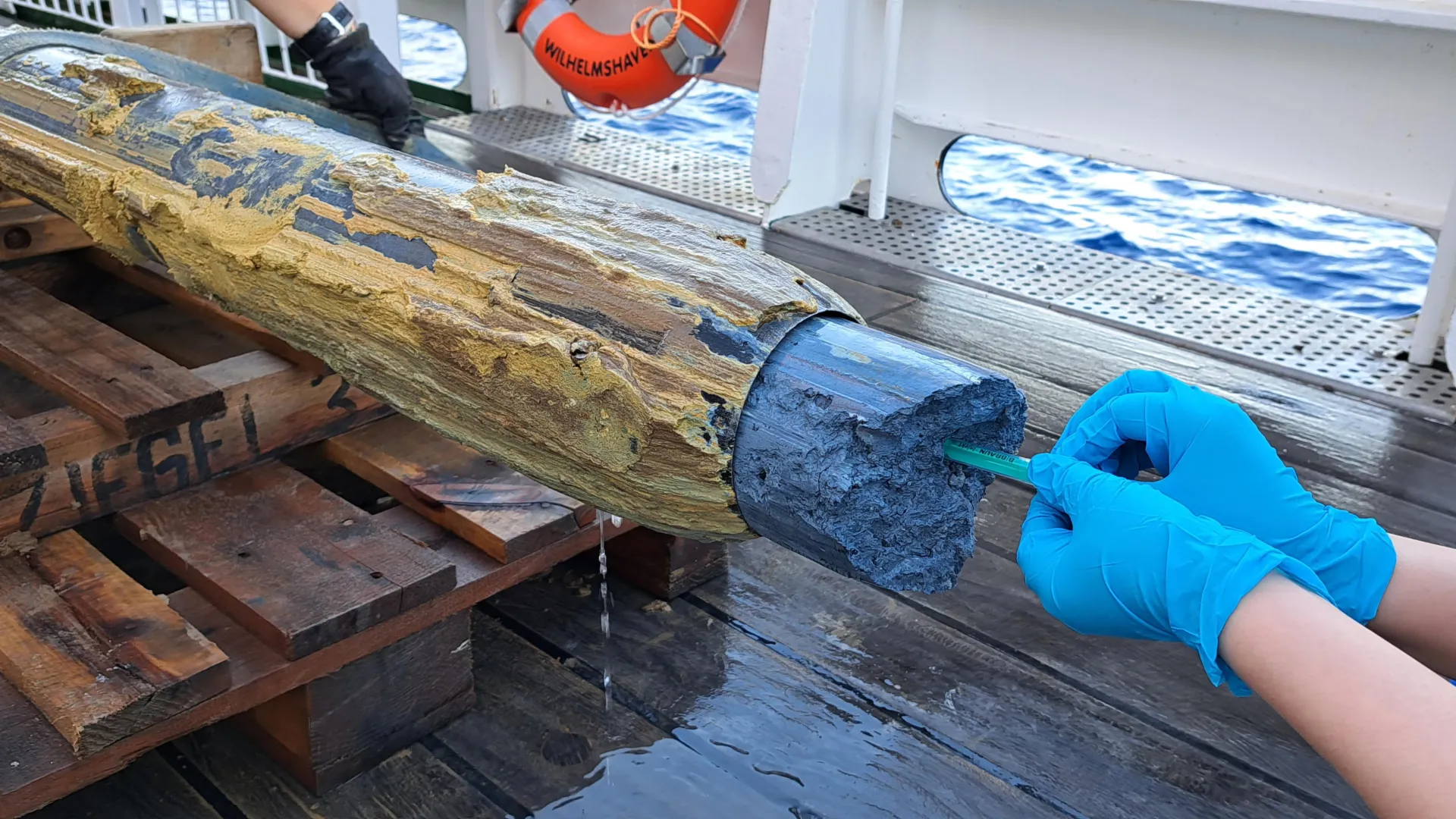Life found in a place scientists thought impossible
Life defies limits in the deep sea—microbes flourish where Earth’s chemistry seems too extreme for survival.
- Date:
- November 9, 2025
- Source:
- MARUM - Center for Marine Environmental Sciences, University of Bremen
- Summary:
- Deep beneath the ocean, scientists uncovered thriving microbial life in one of Earth’s harshest environments—an area with a pH of 12, where survival seems nearly impossible. Using lipid biomarkers instead of DNA, researchers revealed how these microbes persist by metabolizing methane and sulfate. The discovery not only sheds light on deep-sea carbon cycling but also suggests that life may have originated in similar extreme conditions, offering a glimpse into both Earth’s past and the limits of life itself.
- Share:

In a new study, first author Palash Kumawat from the University of Bremen's Geosciences Department and his team investigated how microbes manage to survive in one of the planet's harshest underwater environments. They analyzed lipid biomarkers, specialized fat molecules that reveal biological activity, to uncover the organisms' survival strategies. The site's pH of 12 makes it one of the most alkaline environments ever documented, creating conditions that are exceptionally difficult for life to endure.
Because so few living cells exist there, detecting DNA is often impossible. Instead, the researchers used trace analysis techniques sensitive enough to identify even faint biochemical signals. "But we were able to detect fats," says Kumawat, currently a PhD candidate in the Geosciences Department. "With the help of these biomarkers we were able to obtain insights into the survival strategies of methane- and sulfate-metabolizing microbes in this extreme environment."
Microbial Clues Hidden in Deep-Sea Chemistry
Microbial life in the deep ocean plays an important role in the global carbon cycle, processing carbon and other elements far below the surface. The communities identified by Kumawat's team draw their energy not from sunlight but from minerals in rocks and gases like carbon dioxide and hydrogen, producing methane in the process -- an important greenhouse gas. These biochemical reactions occur independently of the ocean above, showing that these microbes operate in a self-contained ecosystem.
The lipid molecules also help determine whether the microbes are alive or remnants from ancient communities. Intact biomolecules suggest active or recently living cells, while degraded ones indicate fossilized "geomolecules" from long ago. Kumawat explains that combining isotope data with lipid biomarkers shows evidence of both modern and ancient microbial populations inhabiting this hostile environment. "This distinction helps us when working in areas with extremely low biomass and nutrient deficiency," he notes.
Discovering Life at the Limits
Co-author Dr. Florence Schubotz, an organic geochemist at MARUM -- Center for Marine Environmental Sciences at the University of Bremen, emphasizes how remarkable the discovery is. "What is fascinating about these findings is that life under these extreme conditions, such as high pH and low organic carbon concentrations, is even possible," she says. "Until now, the presence of methane-producing microorganisms in this system has been presumed, but could not be directly confirmed. Furthermore, it is simply exciting to obtain insights into such a microbial habitat because we suspect that primordial life could have originated at precisely such sites."
Uncovering Hidden Volcanoes Beneath the Pacific
The team's samples came from sediment cores collected in 2022 during Expedition SO 292/2 aboard the Research Vessel Sonne. During this mission, scientists discovered previously unknown mud volcanoes in the Mariana forearc region and were able to collect samples directly from them.
The work forms part of the Cluster of Excellence "The Ocean Floor -- Earth's Uncharted Interface." Building on their findings, Kumawat and his colleagues now plan to cultivate these microorganisms in controlled incubators to learn more about how they obtain nutrients and persist in such inhospitable environments.
Story Source:
Materials provided by MARUM - Center for Marine Environmental Sciences, University of Bremen. Note: Content may be edited for style and length.
Journal Reference:
- Palash Kumawat, Elmar Albers, Wolfgang Bach, Frieder Klein, Walter Menapace, Christoph Vogt, Florence Schubotz. Biomarker evidence of a serpentinite chemosynthetic biosphere at the Mariana forearc. Communications Earth, 2025; 6 (1) DOI: 10.1038/s43247-025-02667-6
Cite This Page: